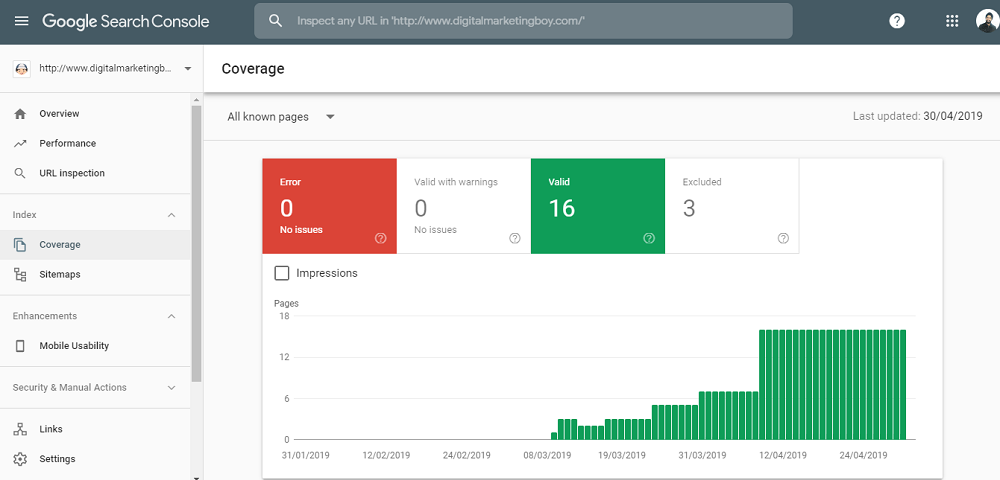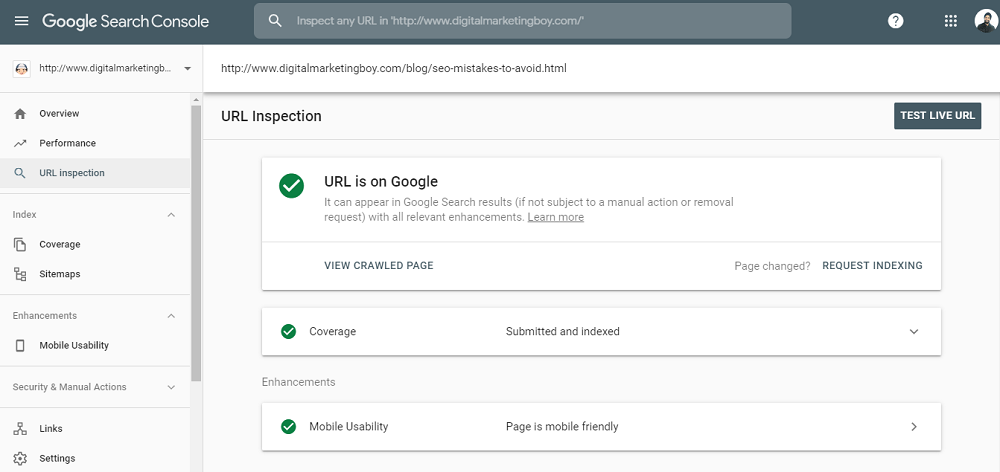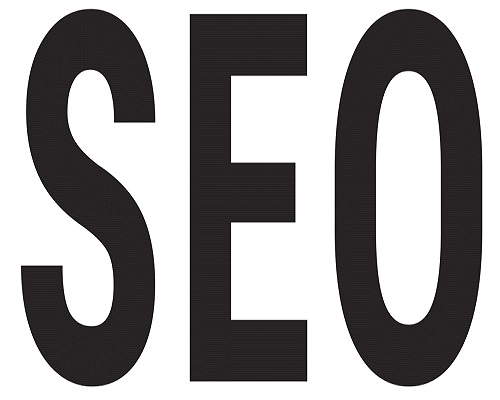


Use technical search engine optimization (SEO) to improve indexation, crawlability, rankings and structure of your website. You can achieve your goals if you are confident about the prioritization of SEO tasks. This blog focuses only on the best practices of technical SEO. Be sure that you do not ignore other optimization factors. Following are the key areas:
A. Indexing: This is an important activity for your web pages to appear on search engines. You can request indexing of your web page URL by logging into a powerful SEO tool 'Google Search Console'. Click on URL inspection, enter the URL and wait for Google to retrieve data. Lastly, you have to click on REQUEST INDEXING and this will allow Google to add your URL in priority crawl queue.
Always check the indexation status of your web pages by accessing Google Search Console and then clicking on Index > Coverage. Here you can easily analyze the web pages that were indexed or excluded by Google search engine.

B. Crawlability: The relevant resources for you to know the crawlability of your web pages are Robots.txt file and No Index Meta Tag in the code. Identify the URL crawling status by logging into Google Search Console. Click on URL inspection, enter the URL and Google will display three sections 'URL is on Google', 'Coverage' & 'Mobile Usability'. These sections provide you details of URL crawling, mobile responsiveness and technical issues. Digital Marketing Boy suggests you eliminate duplicate web pages, fix broken links and avoid redirect chains.

C. Implement Schema Markup: This activity assists users to know about your company in detail and help search engines to understand your content in a better manner. Visit Schema.org to learn the set up of structured data for your web pages. SEO experts can use the Structured Data Testing Tool to review your snippets.
D. Mobile First Indexing: Google search engine mainly uses the mobile version of the content for indexing and ranking. Thus your website needs to be mobile responsive. Digital Marketing Boy suggests you include AMP snippets to the code and speed up web pages on mobile.
E. Website Structure and Navigation: A proper website structure with a clean sitemap helps both visitors and search engine bots to explore your website. It is high time for you to build an XML Sitemap if your website does not have it. Keeping an up-to-date XML Sitemap allows search engines to discover fresh content.
Anchor each internal link with text that will make search engines understand the context of your website. Be sure that you remove broken links and orphan pages. It should not take the number of clicks for users to reach any relevant page from the homepage. If your website is having similar content in multiple languages then regularly check your implemented hreflang tags.
F. Website Speed: The most important key area to improve page load time and optimization score. Faster websites can help you in attaining higher conversion rates and lower bounce rates. You should not use more than one redirect for each web page. 301 is for permanent redirects and 302 for temporary redirects. Use Gzip compression to reduce the size of a file and remove the data that is not required at all. Leverage resource hints to improve the speed of a website and use Etags to enable efficient revalidations. Try to minify JavaScript, CSS, HTML, images and videos for better optimization. SEO experts must not inline large CSS or JS files in the code of web pages.
The above key areas are just technical and then you have to optimize your content, improve server-side latency and perform keyword research.

We have built an interactive checklist to help you handle your website migration.


In-depth information about crawling and indexing for SEO Experts.

Know the importance of 301 Redirects in an SEO strategy.